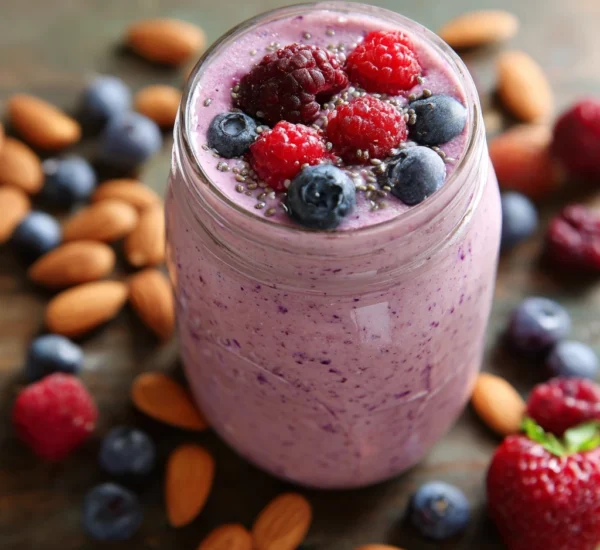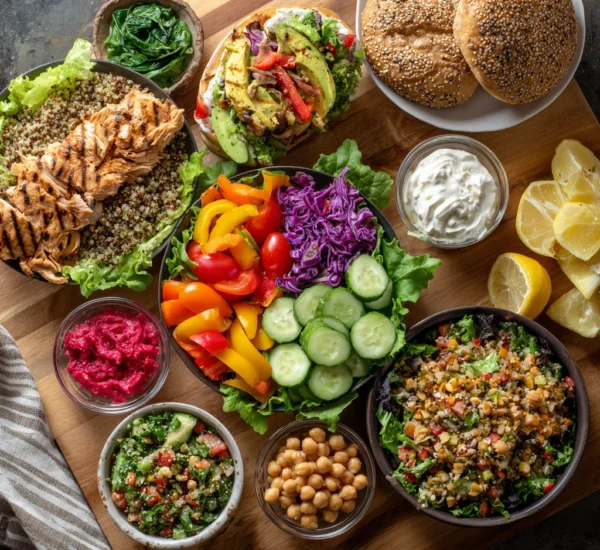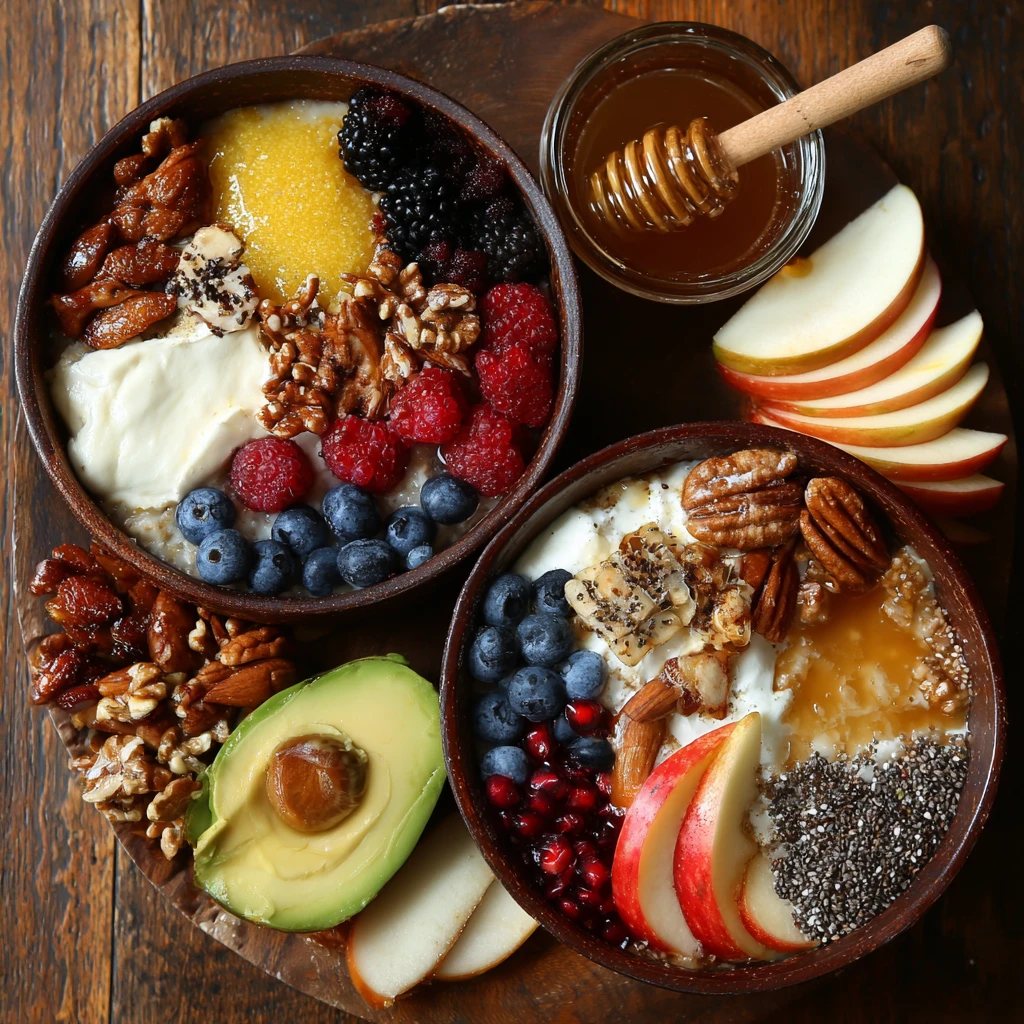Keto Diet Guide: Low-Carb Meal Plans for Better Health
The ketogenic, or keto, diet has surged in popularity for its potential to promote weight reduction and improve overall well-being. This guide offers a comprehensive look at the keto diet, exploring its principles, benefits, potential downsides, and practical tips for success. Whether you’re a beginner or looking to refine your approach, this guide will equip you with the knowledge to navigate the world of keto.

Understanding the Ketogenic Diet
The keto diet is a high-fat, very low-carbohydrate, and moderate-protein eating plan. The primary goal is to shift the body’s metabolism from primarily using glucose (from carbohydrates) for energy to using ketones (from fat). This metabolic state is called ketosis.
The Science Behind Ketosis
When carbohydrate intake is drastically reduced, the body’s glycogen stores (stored glucose) are depleted. As a result, the liver begins to break down fat into fatty acids, which are then converted into ketones. These ketones become the primary fuel source for the brain and body. This process offers numerous potential health benefits, particularly for those looking to reduce weight.
Macronutrient Ratios
Achieving and maintaining ketosis requires adhering to specific macronutrient ratios. While these ratios can vary slightly, a typical breakdown is:
- Fat: 70-80% of total daily calories
- Protein: 20-25% of total daily calories
- Carbohydrates: 5-10% of total daily calories (typically less than 50 grams per day)
These ratios are crucial for forcing the body to rely on fat for fuel and generating ketones effectively.
Benefits of the Keto Diet
Beyond the potential for effective weight management, the ketogenic diet has been linked to several other health benefits.
Weight Management
Perhaps the most well-known benefit of the keto diet is its potential to promote weight reduction. By switching the body’s primary fuel source to fat, the keto diet can increase fat burning and suppress appetite. The high fat intake also contributes to feelings of fullness, making it easier to consume fewer calories overall.
Blood Sugar Control
The keto diet can be particularly beneficial for individuals with type 2. By limiting carbohydrate intake, the diet helps to stabilize blood sugar levels and reduce the need for medication. Studies have shown that the keto diet can improve insulin sensitivity and reduce HbA1c levels, a marker of long-term blood sugar control. Always consult with a healthcare expert before making any significant changes to your diet, especially if you have an existing health issue.
Improved Brain Function
Ketones provide an alternative fuel source for the brain, which can have neuroprotective effects. Some studies suggest that the keto diet may improve cognitive function, memory, and focus. It has also been explored as a potential therapy for neurological disorders such as Alzheimer’s disease and epilepsy.
Other Potential Benefits
Emerging research suggests that the keto diet may offer other potential benefits, including:
- Reduced inflammation
- Improved cholesterol levels
- Potential benefits for certain types of cancer
It’s important to note that research in these areas is ongoing, and more studies are needed to confirm these benefits.
What to Eat and Avoid on the Keto Diet
Navigating the keto diet requires a clear understanding of which foods are keto-friendly and which should be avoided. Focus on whole, unprocessed foods and carefully monitor your carbohydrate intake.
Keto-Friendly Foods
- Healthy Fats: Avocado, olive oil, coconut oil, nuts (almonds, walnuts, macadamia nuts), seeds (chia seeds, flax seeds), fatty fish (salmon, tuna, mackerel).
- Protein: Meat (beef, pork, chicken, lamb), poultry, fish, eggs.
- Low-Carb Vegetables: Leafy greens (spinach, kale, lettuce), broccoli, cauliflower, asparagus, zucchini, bell peppers.
- Dairy (in moderation): Cheese, heavy cream, unsweetened yogurt (full fat).
Foods to Avoid
- Sugary Foods: Soda, juice, candy, ice cream, pastries, cakes.
- Grains: Bread, pasta, rice, cereal, oats.
- Starchy Vegetables: Potatoes, corn, peas.
- Fruits (in large quantities): Bananas, grapes, apples, oranges. Small portions of berries (strawberries, blueberries, raspberries) are generally okay.
- Legumes: Beans, lentils, chickpeas.
- Processed Foods: Many processed foods are high in carbohydrates and unhealthy fats.
- Low-Fat Products: These are often high in added sugars to compensate for the lack of fat.
Potential Downsides and Side Effects
While the keto diet offers numerous potential benefits, it’s important to be aware of potential downsides and side effects.
The "Keto Flu"
The “keto flu” is a common side effect experienced by some individuals when they first start the keto diet. Symptoms can include fatigue, headache, nausea, irritability, and brain fog. These symptoms are usually temporary and subside within a few days to a week as the body adapts to using ketones for fuel.
Nutrient Deficiencies
The restrictive nature of the keto diet can increase the risk of nutrient deficiencies if not carefully planned. It’s important to consume a variety of nutrient-dense foods and consider supplementing with vitamins and minerals, such as electrolytes (sodium, potassium, magnesium).
Digestive Issues
Some people may experience digestive issues such as constipation or diarrhea when starting the keto diet. This is often due to changes in fiber intake and gut bacteria. Increasing fiber intake from low-carb vegetables and staying adequately hydrated can help alleviate these issues.
Other Potential Concerns
- Kidney Stones: A higher intake of animal protein can increase the risk of kidney stones in susceptible individuals.
- Elevated Cholesterol: While the keto diet can improve cholesterol levels for some, it may increase cholesterol levels in others. It's important to monitor cholesterol levels regularly.
Getting Started and Staying on Track
Embarking on the keto diet requires careful planning and preparation to ensure success and minimize potential side effects.
Planning Your Meals
Planning meals in advance is crucial for staying on track with the keto diet. Create a weekly meal plan that includes a variety of keto-friendly foods and ensures you are meeting your macronutrient goals.
Tracking Macronutrients
Tracking your macronutrient intake is essential for achieving and maintaining ketosis. Use a food tracking app or website to monitor your carbohydrate, protein, and fat intake. This will help you identify any areas where you may need to make adjustments.
Staying Hydrated
Staying adequately hydrated is important on any diet, but it’s particularly important on the keto diet. Drink plenty of water throughout the day, especially during the initial stages of the diet when you may experience increased fluid loss.
Managing Cravings
Cravings for carbohydrates can be challenging, especially during the initial stages of the keto diet. Find healthy keto-friendly alternatives to your favorite high-carb foods, such as cauliflower rice instead of regular rice or almond flour baked goods instead of traditional baked goods.
Listening to Your Body
Pay attention to how your body is responding to the keto diet. If you experience any persistent or severe side effects, consult with a healthcare professional. It’s important to personalize the keto diet to fit your individual needs and preferences.

Frequently Asked Questions (FAQs)
What is the main goal of the keto diet?
The main goal is to shift the body’s metabolism to use ketones (from fat) for energy instead of glucose (from carbohydrates). This metabolic state is called ketosis.
How long does it take to get into ketosis?
It typically takes 2-7 days to enter ketosis, depending on your carbohydrate intake, activity level, and individual metabolism.
Can I eat fruit on the keto diet?
Most fruits are high in carbohydrates and should be limited. Small portions of berries, such as strawberries, blueberries, and raspberries, are generally okay.
Is the keto diet safe for everyone?
The keto diet is not suitable for everyone. It’s important to consult with a healthcare professional before starting the keto diet, especially if you have any underlying health issues.
What are the symptoms of the "keto flu"?
Symptoms can include fatigue, headache, nausea, irritability, and brain fog. These symptoms are usually temporary and subside within a few days to a week.
How much protein should I eat on the keto diet?
Protein should make up approximately 20-25% of your total daily calories.
What are some good keto-friendly snacks?
Good keto-friendly snacks include nuts, seeds, cheese, avocado, and hard-boiled eggs.
Can I drink alcohol on the keto diet?
Some alcoholic beverages are lower in carbohydrates than others. Hard liquor (vodka, gin, whiskey) and dry wine are generally okay in moderation. Avoid sugary cocktails and beer.
How do I track my macros on the keto diet?
Use a food tracking app or website to monitor your carbohydrate, protein, and fat intake.
What should I do if I cheat on the keto diet?
Don’t get discouraged. Get back on track with your next meal and continue to follow the keto diet.



